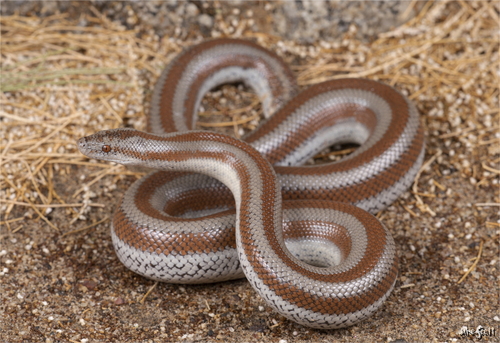
Rosy Boa
The Rosy Boa, with its gentle nature and striking tri-striped pattern, is a desert dweller that plays a crucial role in controlling rodent populations. Its adaptability to arid environments and unique coloration make it a fascinating subject for both scientists and nature lovers alike.
Brown, Grey, Black, White, Cream, Orange, Chocolate
Color
1-2 years
Age of Sexual Maturity
Low
Aggression
Characteristics
Lichanura trivirgata and Lichanura orcutti, commonly known as the Rosy Boa, are small, non-venomous snakes found in the southwestern United States and northwestern Mexico. They thrive in rocky habitats and deserts. These boas are known for their gentle demeanor, distinctive pinkish hue, and three dark stripes running longitudinally along their bodies.
Distribution Range of the Rosy Boa
Lichanura trivirgata and Lichanura orcutti, commonly known as the rosy boa and the coastal rosy boa respectively, are native to the southwestern United States and northwestern Mexico. Their geographical distribution includes regions such as southern California, western Arizona, southern Nevada, and Baja California in Mexico.
Rosy Boa's Habitat
Environmental Conditions
These species are typically found in arid and semi-arid environments, where they inhabit rocky hillsides, desert scrublands, and mountainous regions. The climate in these areas can be characterized by hot, dry summers and mild winters, with low annual precipitation.
Ecological Niche
Rosy boas are well-adapted to their dry habitats, often seeking shelter under rocks, in crevices, or within burrows to avoid the harsh desert sun. They are nocturnal or crepuscular, which helps them conserve moisture and avoid extreme temperatures. These snakes primarily prey on small mammals and birds, contributing to the control of rodent populations in their ecosystems.
Copyright @ Nature Style Limited. All Rights Reserved.
 English
English